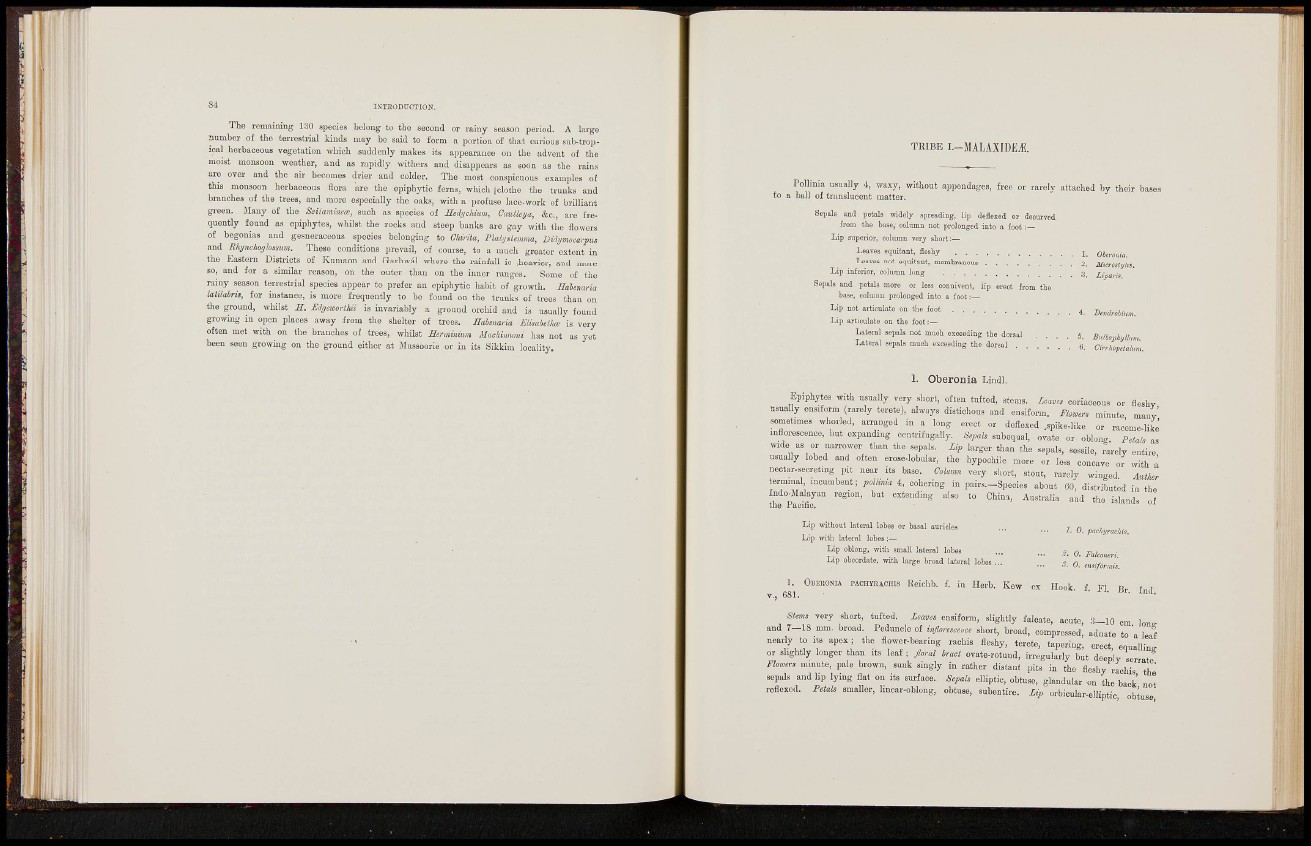
ISTEODDCTION.
The rcmaimng 130 species belong to the second or rainy season period. A large
number of the terreslrial kinds may be said to form a portion of that cnrioua sub-tropical
herbacsous yegetation which snddeuly makes its appearance on the advent of the
moist monsoon weather, and as rapidly withers and disappears as soon as the rains
are over and the air becomes drier and colder. The most conspicuous examples of
this monsoon herbaceous flora are the epiphytic ferns, which |clothe the trunks and
branches of the trees, and more especially the oats, with a profuse lace-work of brilliant
green. Many of the Sailamimai, such as species of mdijchiurn, Cautleya, &c., are frequently
found as oijiphytes, whilst the rocks and steep banks are gay with the flowers
of begonias and gesnoraceous species belonging to C/oVito, Flatsitemma, Biliimccarims
and Rhyndtoghimm. These conditions prevail, of course, to a much greater extent in
the Eastern Districts of Kumaon and Garhwal where the rainfall is .heavier, and more
so, and for a similar reason, on the outer than on the inner ranges. Some of the
rainy season terrestrial species appear to prefer an epiphytic habit of growth. Halcmria
Milairis, for instance, is more frequently to be found on the trunks of trees than on
the ground, whilst S. EigmrtUi is invariably a ground orchid and is usually found
growing in open places away from the shelter of trees. Babmaria Elimidla, is very
often met with on the branches of trees, whilst Henmiium Mcclcmmii has not
been seen growing on the ground either at Mussoorie or in its Sikkim locolity. > yet
TRIBE I . - M A L A X I D ËA
Pollinia usually 4, waiy, without appendages, free or rarely attached by their bai
a ball of translucent matter.
Sepals and petals widely spreading, hp deflesed or deouived
from the base, oohimn not prolonged into a foot :—
L i p superior, columu very short:—
Leave« equitaot, Seshy i, Okmiu.
Leaves not equitant, membranous 2. Mkrostyîit
L i p inferior, eolunjn long 3 £ ' • '
Sepals and petals 3nore or less conniveat. Up erect from tlie
base, ooluLcn prolonged into a foot ;—
Lip not artioulat. on the foot I),Mt„m.
L i p articulate on the foot ;—
Lateral sepals not much eiee.ding the dorsal . . . . 5. B , M M um
Lateral s.pals muoh eioeeding the iorsal
1. Oberonia Lindl.
Epiphytes with usually very short, often tufted, stems. coriaceous or flcshv
usually ensiform {r.arely terete), always distichous and ensiform. Fimer, minute many
sometimes whorled, arranged in a long erect or deflexcd j,pike-like or rac'eme-like
inflorescence, but expanding centrifugally. subequal, ovate or oblong E.lals as
wide as or narrower than the sepals. Zip larger than the sepals, sessile, rarely entire
usually lobed and often erose-lobular, the hypochilo more or less concave or with à
nectar-secretiug pit near its base. Colm,,, very sliort, stout, rarely winged
terminal incumbent i jMUima 4, cohering in pairs.-Species about 60, distributed in the
Xndo-Halayan region, but extending also to China, Australia and the islands of
Lip without lateral lobes or basal auricles
L i p with lateral lobes
L i p oblong, with small lateral lobes
L i p obeordate, with large broad lateral lobes ...
i. 0. pachyracJiis.
2. 0. Falconeri.
S. 0. emjformh.
OuEKOsii PAOHVHICHIS lieichb. f. in Herb, fiow ex Hook. f. Fl. Br I„d
sum, very short, tufted. ensiform, slightly falcate, acute, 3 - 1 0 cm lonir
and 7 - 1 8 mm, broad. Peduncle of short, broad, compressed, adnate to a leaf
neady to its apex ; the flower-bearing rachis fleshy, terete, tapering, erect, equalling
or sbghfly longer than its leaf ; Jhnl Iract ovate-rotund, irregularly but deeply serrate"
n,«er> minute, pale brown, sunk singly in rather distant pits in the fleshy rachis th'
sepals and hp lying flat on its surface. elliptic, obtuse, glandular on the back not
reflexed. PeM> smaller, linear-oblong, obtuse, subentire. Lip orbicular-elliptie obtuse